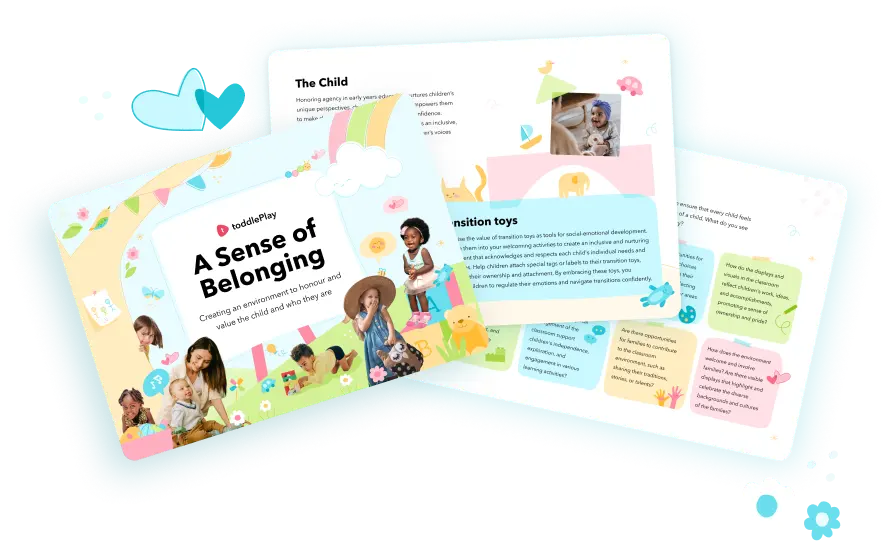As an early years educator, you have the power to create a nurturing and inclusive environment where children in your setting develop a strong sense of belonging. By implementing thoughtful strategies, you can empower children to feel valued, accepted, and connected to their learning environment
A ‘sense of belonging’ refers to the feeling of security, support, and acceptance that is received within a group. Within the nurturing environments we carefully craft, this feeling of belonging transforms into a genuine and enduring connection, nurturing the growth and flourishing of every child.
Fostering a sense of belonging is the foundation of childhood education and development. It influences a child’s emotional, social, cognitive, and cultural growth – the effects of which have a positive impact on children’s relationships and shape their journey into successful lifelong learners. As educators, we have an opportunity to be intentional in the way that we create safe spaces where children can feel valued, respected, and loved.
What are some ways to create a sense of belonging in early years settings?
- Nurturing Relationships: Take the time to greet children individually as they enter the learning space, showing genuine interest in their lives and engaging in meaningful conversations. Your involvement and support can create a safe and supportive environment where children feel comfortable expressing their thoughts, emotions, and needs.
- Establishing Rituals and Routines: Try to establish consistent routines and rituals that provide a sense of predictability and security. Communicate schedules, transitions, and expectations clearly to busy parents and children, creating a structured and familiar environment that children can rely on. Your intentional efforts in establishing these rituals and routines foster a sense of community by creating a stable, supportive, and empowering childhood setting.
- Creating Inclusive Environments: Celebrate and value diversity as you teach children about it, while fostering a sense of fairness and empathy through age-appropriate discussions and activities. By using resources that reflect different cultures, abilities, and family structures, you can encourage children to embrace their differences and value each other’s unique qualities. Your efforts to create an inclusive environment will encourage children’s early learning and development by empowering them to appreciate diversity and foster a sense of belonging.
- Celebrating Diversity: Create opportunities to celebrate and learn about the diverse backgrounds, traditions, and cultures represented within your learning space. Plan activities that explore the different festivals, holidays, or customs that families celebrate; invite children and families to share their traditions, stories, or special talents through these explorations. By actively embracing diversity, you can encourage children’s social skills to develop, while fostering a sense of respect, empathy, and appreciation for one another.
- Providing Individualised Support: Recognise the individual needs and interests of each child. Through differentiated experiences and activities to accommodate diverse learning styles and abilities, you can show how you value and support individuality. Provide opportunities for children to explore their curiosities and develop their strengths as you nurture a strong sense of acceptance, belonging, and competence.
- Involving Families: Take the initiative to include families as active partners in their child’s early experiences. Collaboration with families creates a strong sense of community and belonging for everyone involved. Regular communication channels will help keep families informed and engaged: welcome their inputs, perspectives, and participation in classroom activities. Your inclusive approach will empower families to be active participants in their child’s education.
Explore our downloadable booklet, A Sense of Belonging, to take an empowered approach as you nurture relationships with children and their families. Your dedication and intentional efforts will empower children to feel safe and secure, fostering a lifelong love of learning and a strong foundation for their future success.
How to use this resource:
- Reflect on your learning environment and consider where ‘belonging’ is visible.
- Plan for ways to nurture relationships as you welcome new learners to your learning space.
- Add additional strategies to your toolkit as you create a sense of belonging.











